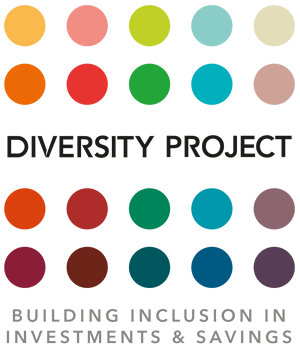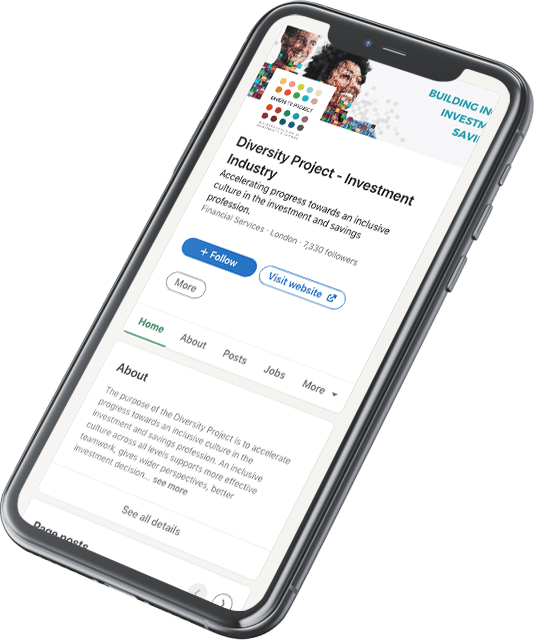Potential over polish and the great mispricing of talent
Talent is being completely mispriced. And despite a supposed ‘war for talent’, high-potential candidates and employees routinely get overlooked. James Whiteman and David Aujla,the Diversity Project’s Social Mobility co-leads, reflect on why this is and highlight the importance of having diverse backgrounds when constructing teams.
And breathe…! March marks the end of a year-long project to raise awareness of social mobility, socioeconomic diversity and one of the most overlooked talent pools out there. Our #potentialoverpolish speaker series featured – among others – best-selling author Matthew Syed, sociologist Dr Louise Ashley and former Bank of England chief economist Andy Haldane. Below 1 are a few highlights of what we took away from the featured experts. Although the focal point of our argument is class background – where privilege and polish play out together in their most tangible form – the logical conclusions extend far beyond this to include all forms of minorities in the workplace.
Talented rebels and diverse teams
Contrary to what is usually argued, there isn’t a scarcity of talent. This is a myth. Outdated and simplistic notions of what constitutes talent in any given context are leading us to search in remarkably narrow talent pools. And exceptional talent is hiding in plain sight, right underneath our noses. It can be found in the council estates, tower blocks and middle-class suburbs up and down the country. Human resourcing constraints are undoubtedly a barrier to unearthing these diamond-esque employees. However, if we are to truly embrace the fact that people are our greatest asset, we need a radical rethink of hiring and progression practices. In simple terms, we need to value rebels and start thinking about teams and organisations as portfolios of assets – where diversity is the coveted prize; the thing that will make the difference. After all, nature figured out diversity’s importance for ecosystem resilience a long, long time ago. Much of our inspiration comes from Andy Haldane’s July 2018 Financial Times article, ‘Diversity versus merit is a false choice for recruiters’, in which he argued we should not always hire the best person for the job, but rather the best person for the team. Thinking in narrow, individualistic terms overlooks a critical component of how effective teams operate. You need varied personalities with different and complimentary skillsets. As Matthew Syed reminded us in the first session, we should seek out the ‘rebels’ and in doing so expand our coverage of the complex ‘problem spaces’ facing businesses today. If we lived in a simple and linear world, hiring carbon copies of our top performers might work. Unfortunately, we don’t. In his book Rebel Ideas, Syed specifically mentions demographics and backgrounds as being critical to achieving cognitive diversity in teams and organisations.
¹Note: Thankfully, many passionate and brilliant individuals have also been on a similar mission – 1 such as Amol Rajan’s How to Crack the Class Ceiling two-part documentary on BBC2 or the launch of Progress Together with the amazing Sophie Hulm at the helm, to name just two.
To be clear, there is unquestionably a huge amount of potential to be found in individuals who exude ‘polish’ and the confidence often associated with it. However, to use polish as a proxy for potential (and therefore talent) is lazy and misguided. Talent is not ordained on the privileged few and generally manifests itself where passion and hard work collide. And to undervalue or misunderstand the importance of diversity to team performance and dynamics is a grave neglection of managerial duties. After all, if firms are to survive, let alone thrive, in the challenging times ahead they will need to place the right people in the right positions.
Finding talent: Beware of masks and sliding doors
Finding talent is hugely complex and context dependant. As Dr Louise Ashley puts it in her recent book:
“Getting the ‘right’ people into the ‘right’ job is extraordinarily complicated and as they attempt to do so, managers deploy a variety of values which may not be meritocratic, though impressions otherwise can have a powerful legitimating function, to protect the unequal status quo.”²
There are some important principles that can help guide us in the right direction, though. Tyler Cowen and Daniel Gross’s latest book Talent is a broad survey of the recruitment landscape that challenges simplistic notions of intelligence, personality tests and highlights the importance of considering minority groups when hiring and promoting – including gender, ethnicity, race, disability, neurodiversity among many other traits. While we didn’t feature them in our speaker series, their ideas are very aligned to our thinking. “Most of us have a bias toward well-spoken and articulate storytellers.” They warn readers to stay alert to this bias as it can “cause you to hire glib but unsubstantial people and overlook rare creative talent.”³
We should remove as many biases as we can from both our minds and the processes associated with recruitment – and commit to looking where others are not. We should also heed these warnings when hiring and promoting internally, too. A huge amount of unlocked potential already lies within businesses – perhaps hiding in plain sight, either masking their true identities or as yet uncaptured data points on a company’s journey toward socioeconomic diversity.
Haldane reminded us to beware mindful of sliding doors moments. By which he meant a lack of appreciation for the role of luck in any given person’s career and the dangers of extrapolating one success story to conclude an organisation doesn’t have a problem with social mobility. Indeed, Haldane himself, having risen from the humble beginnings of a Sunderland council estate could have been used as one such example.
Of course, all of this is meaningless though if you hire simply for ‘fit’. Syed argued that it is not that these practices are outright wrong, but we should be ensuring alignment of values and not personality traits. If common values are shared, then selective and constructive criticism can be aired without damaging long-term relationships or team dynamics. Or as neurodiversity guru Judy Singer put it in a recent webinar, we should be aiming for “integration, not assimilation”.⁴
² Dr Louise Ashley, Highly Discriminating: Why the City Isn’t Fair and Diversity Doesn’t Work (P.22-23), 2022.
³ Talent (P.33), Tyler Cowen & Daniel Gross, 2022.
⁴ An Interview with Nancy Doyle and Judy Singer 2022
Creating healthy and inclusive cultures based on shared values is also important because it there is increasing evidence that ‘forced diversity’ doesn’t work.⁵
Perceptions matter
In all of the sessions – just as with any on diversity, equity and inclusion conversation – we were only ever one small step away from the subjects of intersectionality and data. Our fourth session, Hidden secrets and success stories, focused on sharing industry insider experiences and tips. And any firm looking to start its journey should take a look at the Social Mobility Commission’s Toolkit and the Social Mobility Foundation’s Employers Index – something that became evident during the session with Tom Lyas, Browne Jacabson’s Head of Resourcing.
Regarding data, Haldane convincingly argued that perceptions of data are even more important than the data itself. This brought us somewhat full circle – to our goal of trying to change perceptions, knowing that is the precursor to action; the only real way to effect change.
Perhaps such circularity wasn’t a surprise, given how we chose to end the series. But neither of us could have anticipated the symmetry and power of Haldane’s parting words. Asked about his new role as CEO of the Royal Society of Arts, and without missing a beat, he referenced the importance of diversity and inclusion to its purpose:“The reason it operated in that way takes us right back to the topic of today’s conversation. It was a recognition, born out of the Enlightenment, out of the 18th century coffeehouse culture, that when you bring people together from different backgrounds, from different professions and from different disciplines – and in this case stick them in a coffeehouse off the Strand – magic happens; innovation happens; social change happens. … The RSA encapsulates the power of diversity across all its dimensions.”
A big thank you to everyone who took part and tuned in.
⁵ ‘Diversity and Performance in Entrepreneurial Teams’, Sophie Calder-Wang , Jacobs Levy Equity Management 5 Center for Quantitative Financial Research Paper, 21 August 2021.





